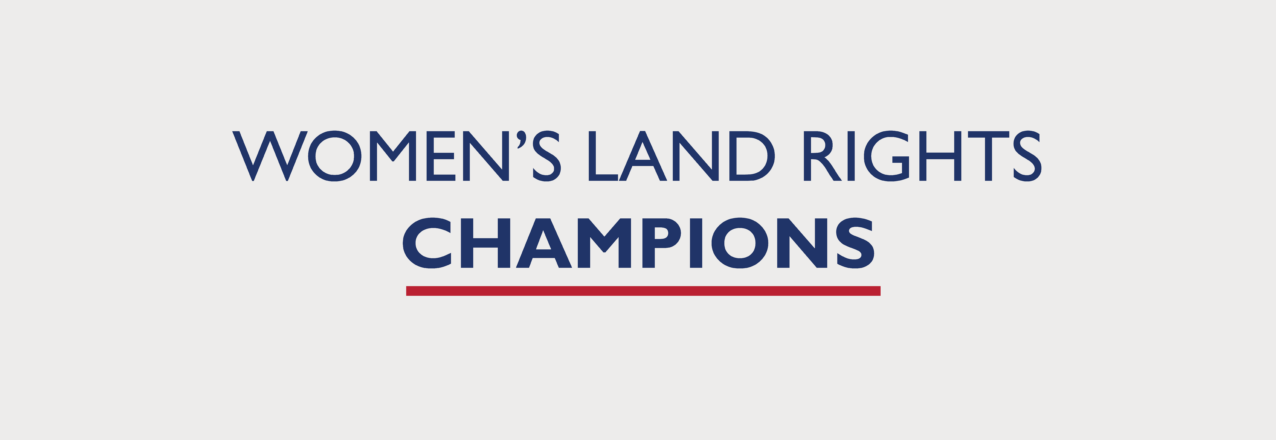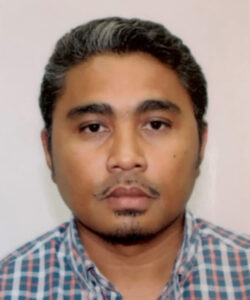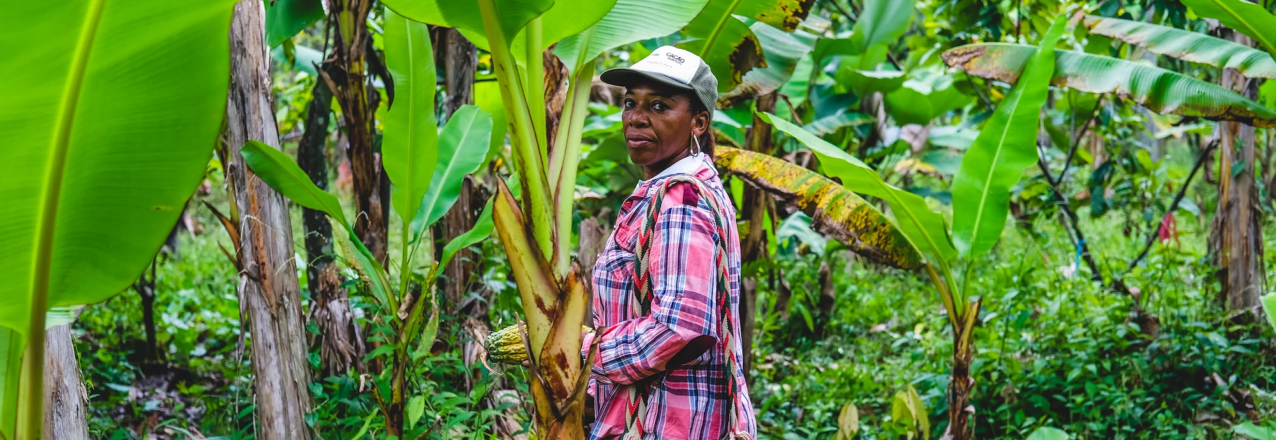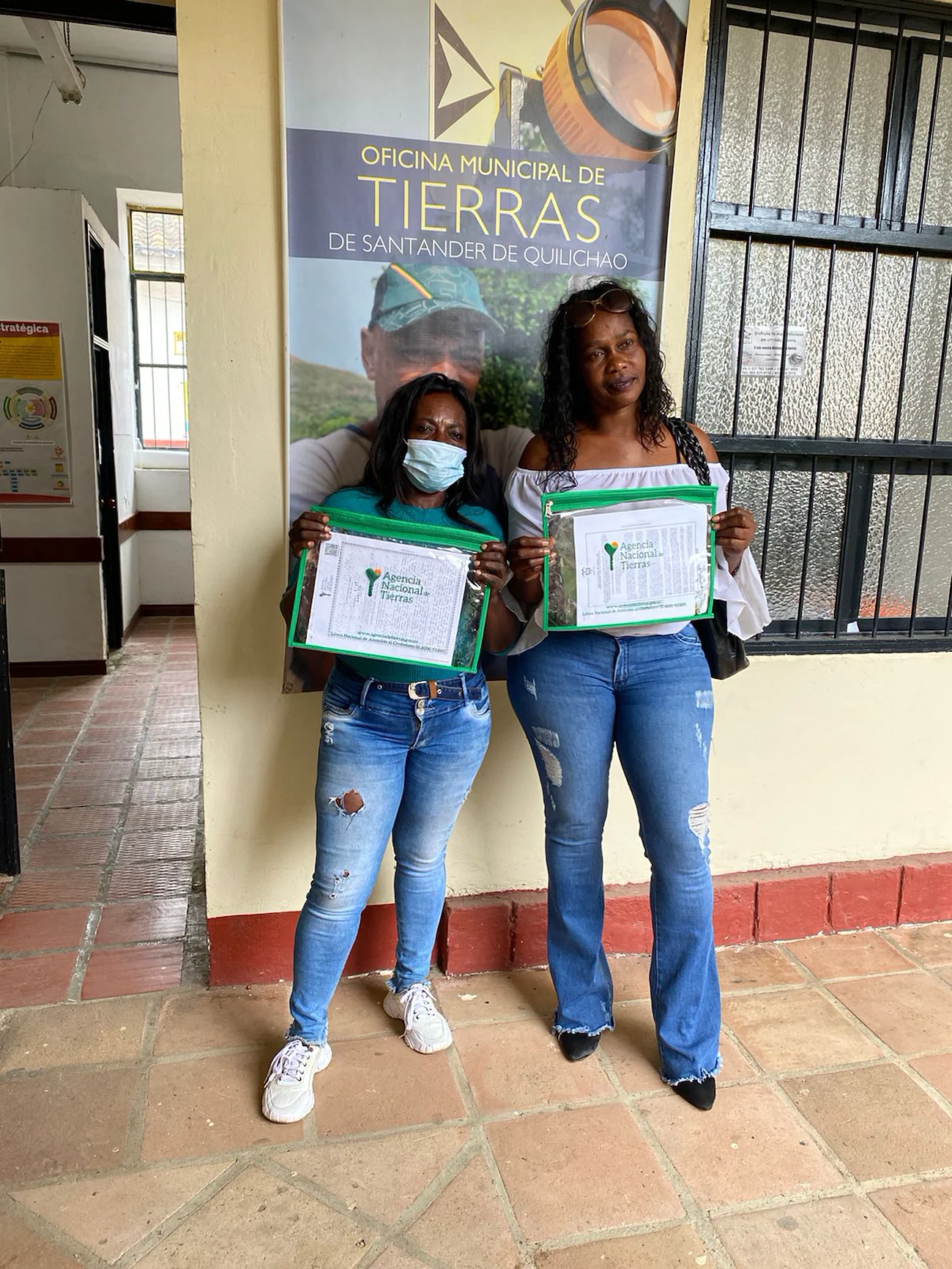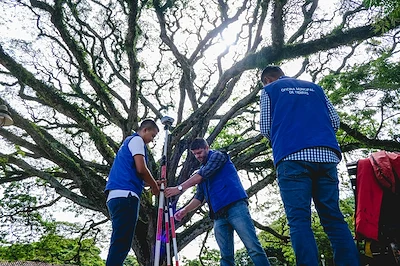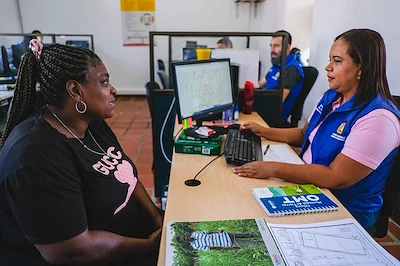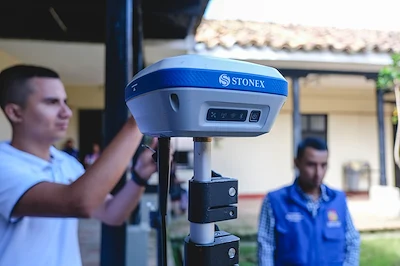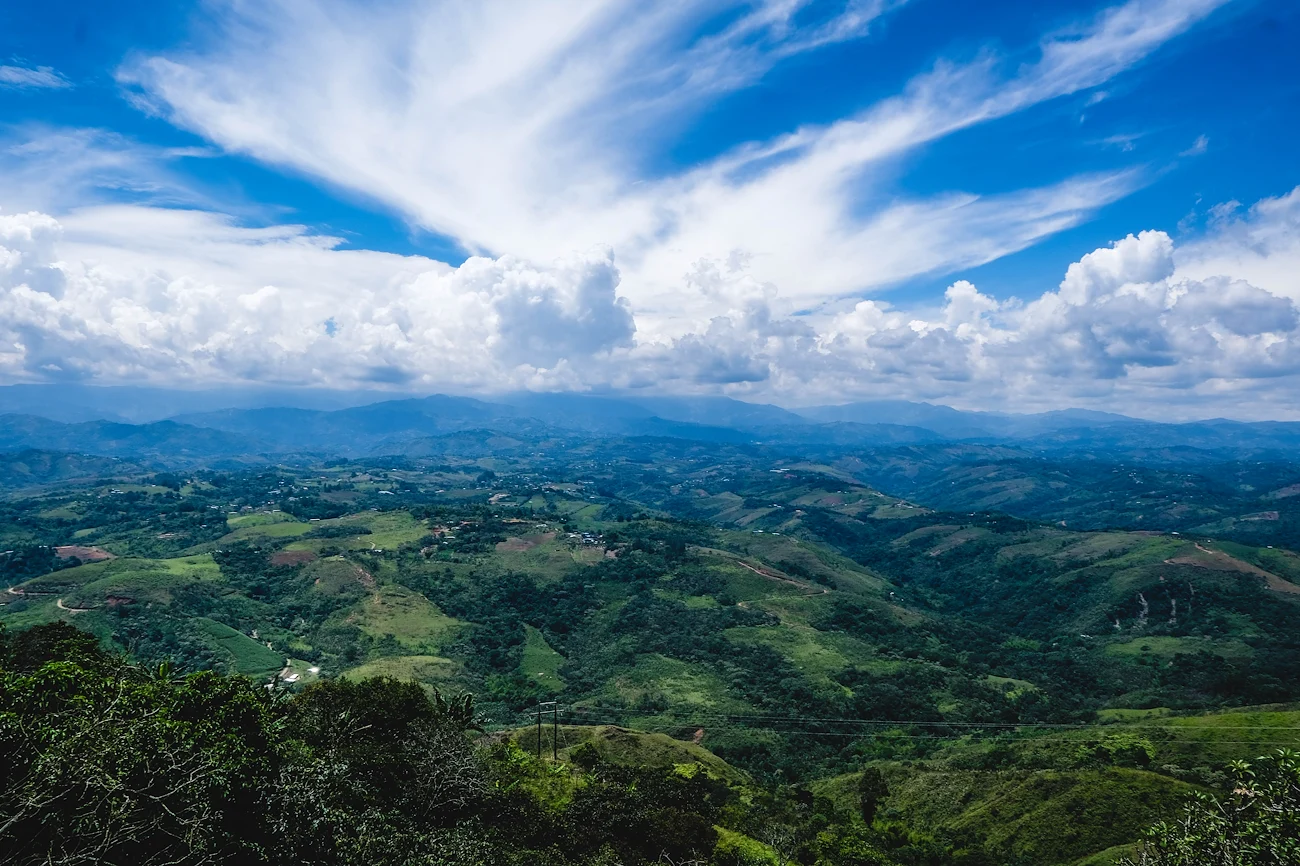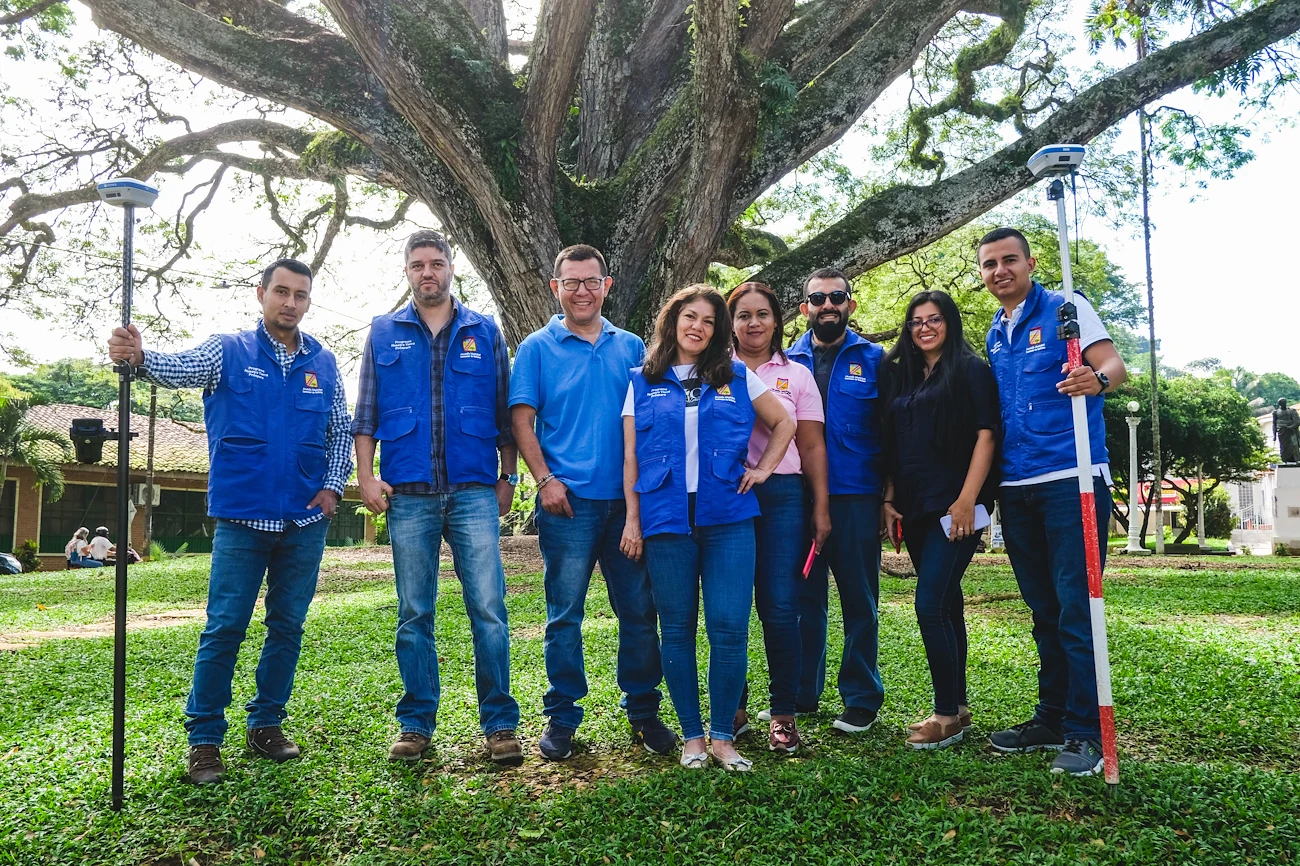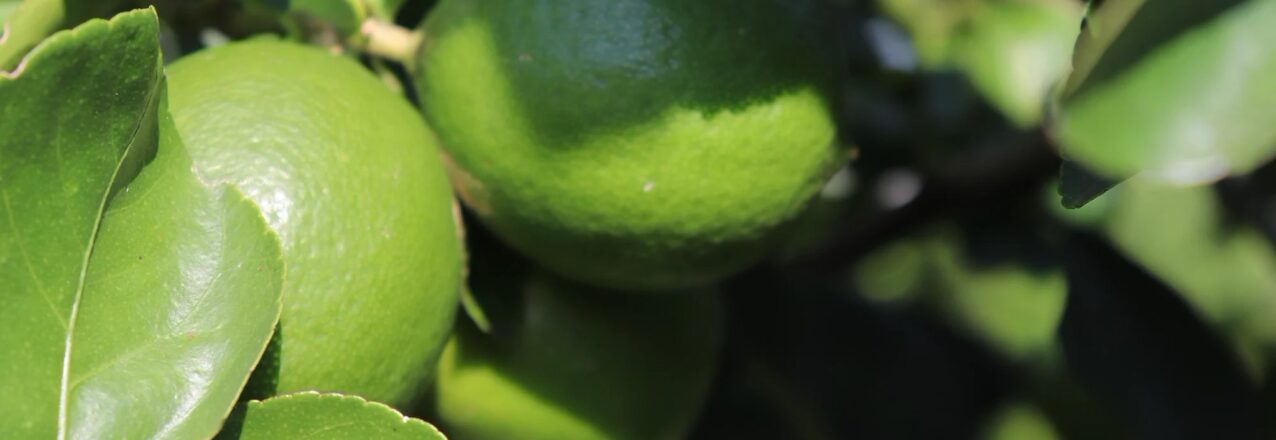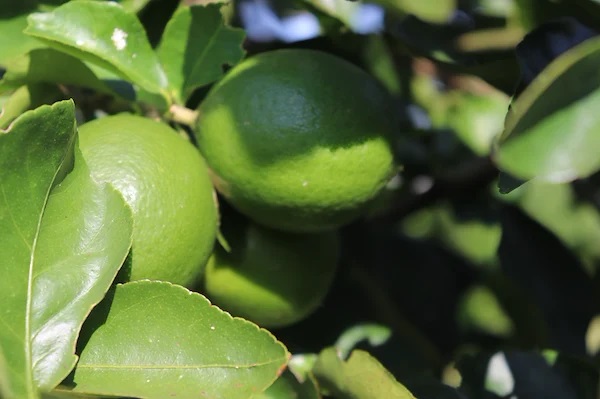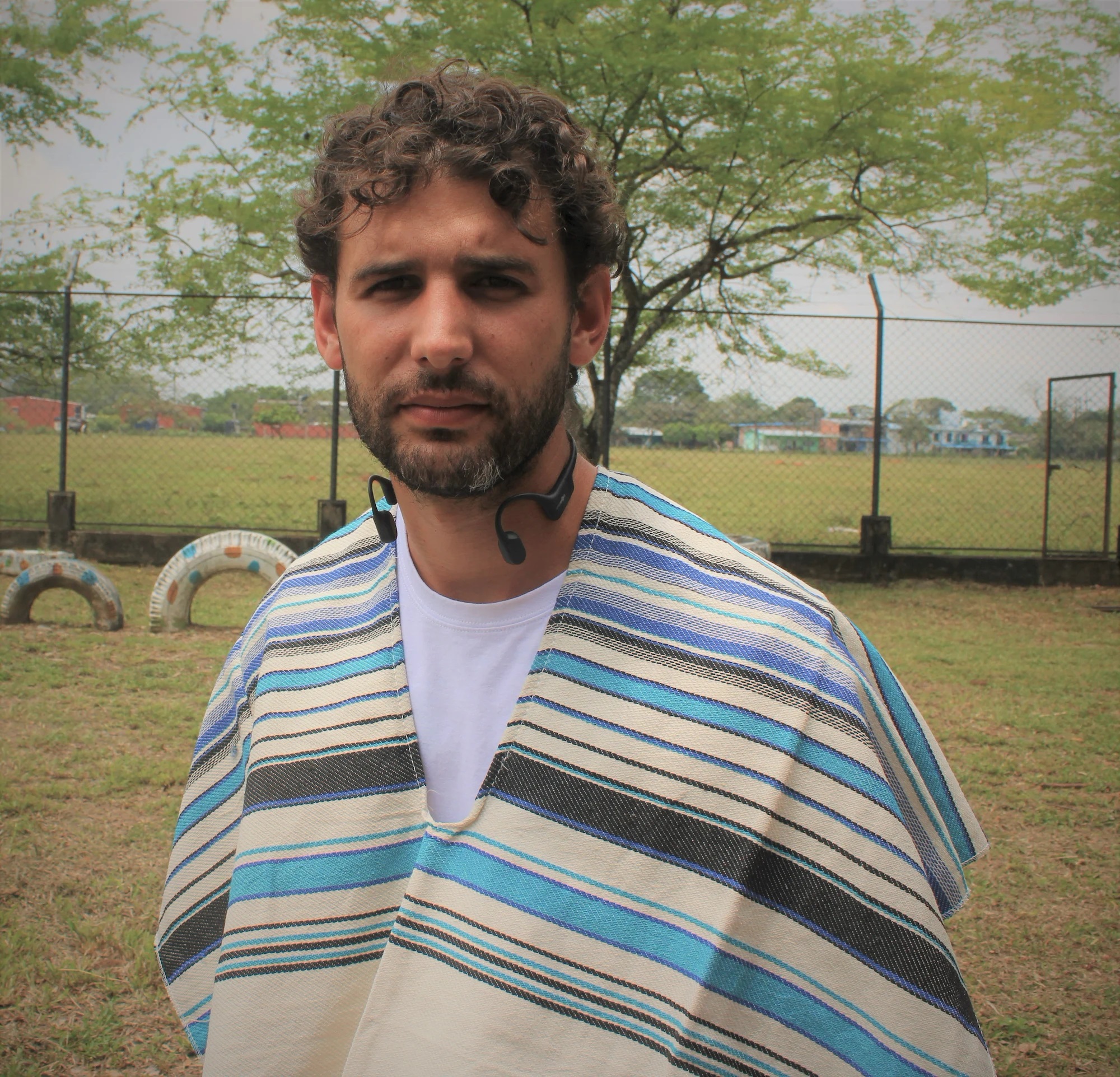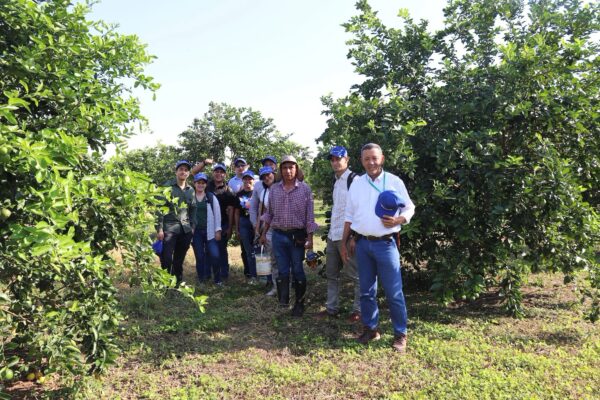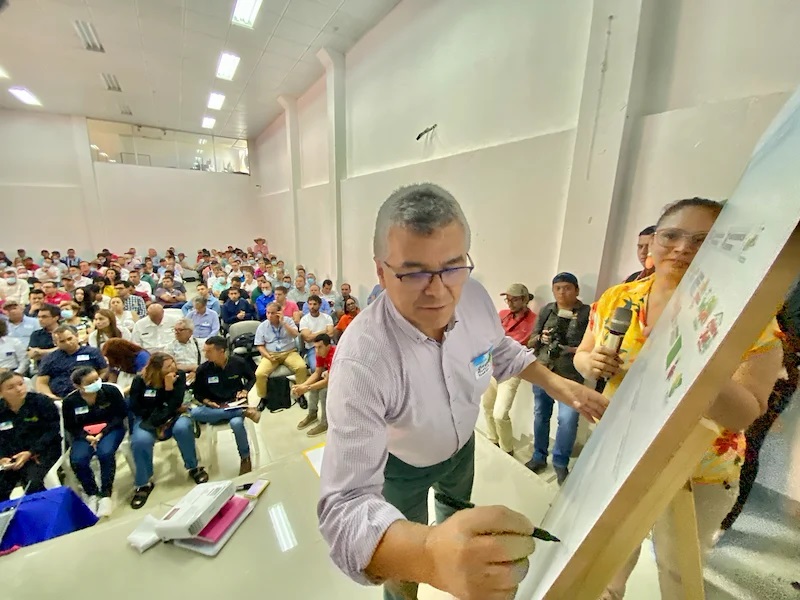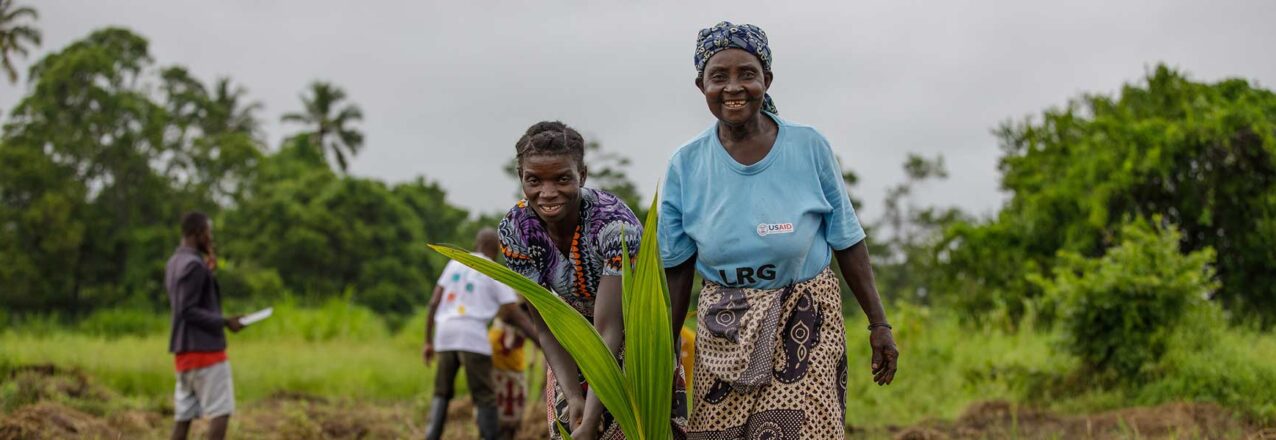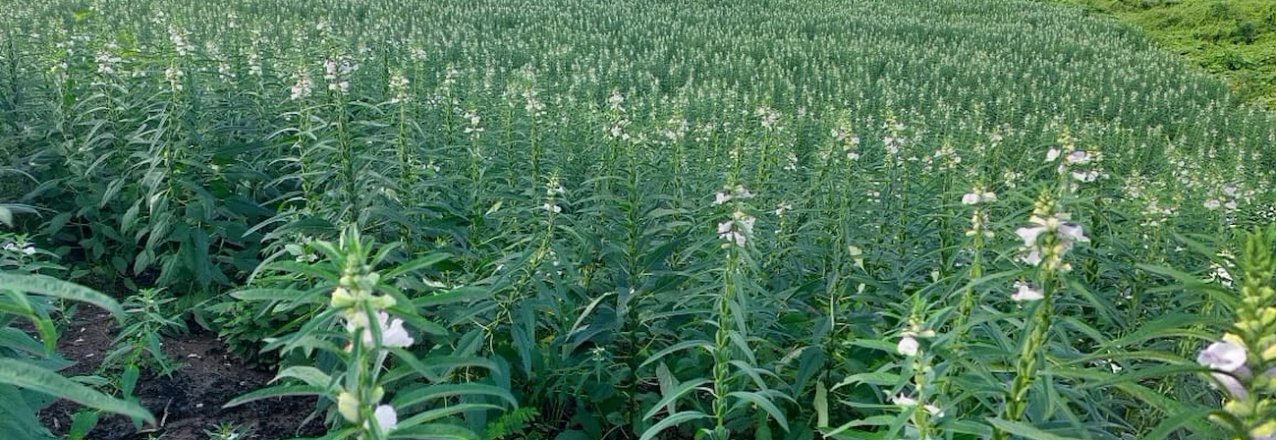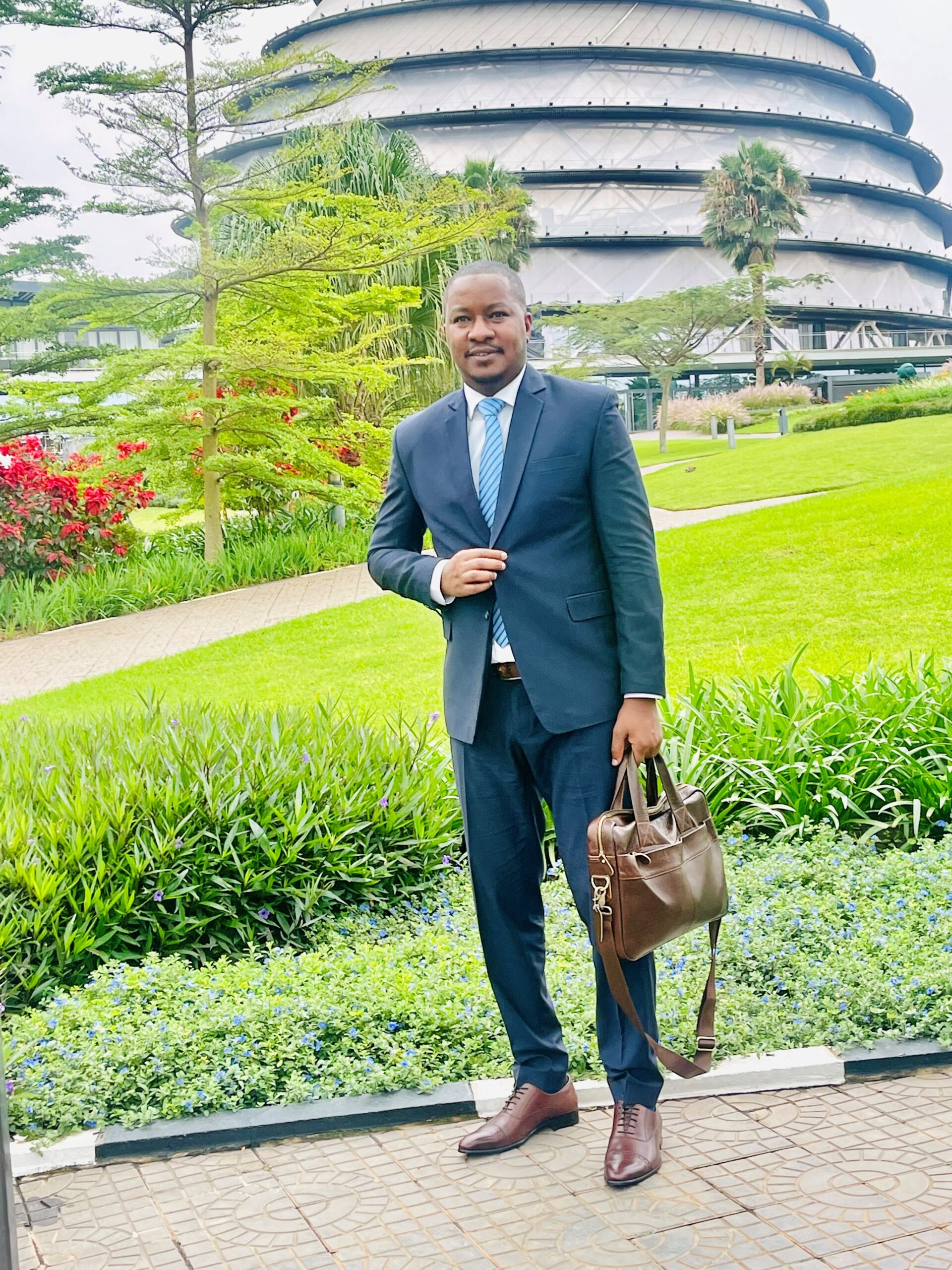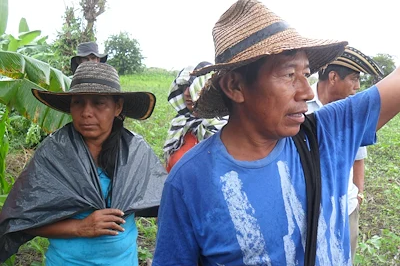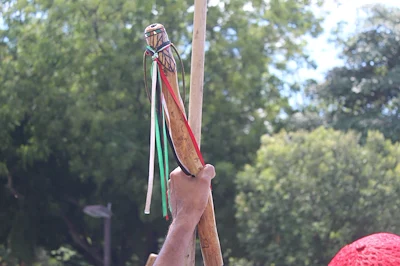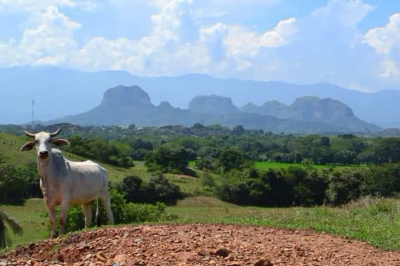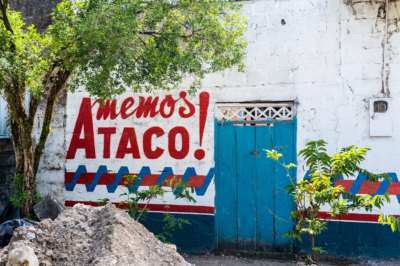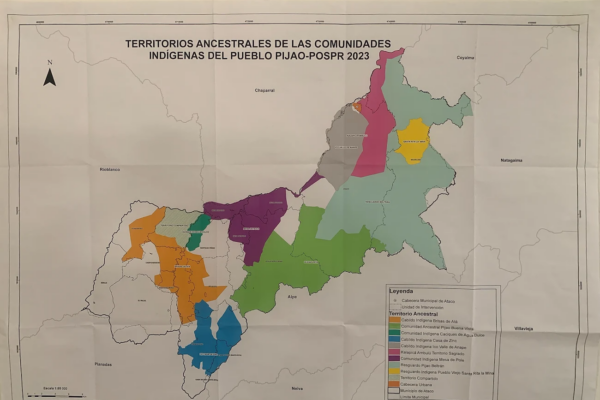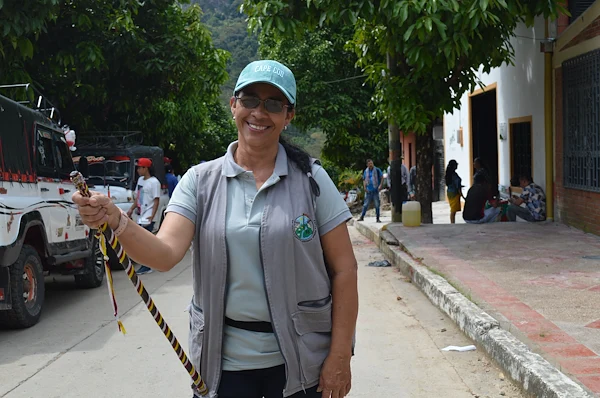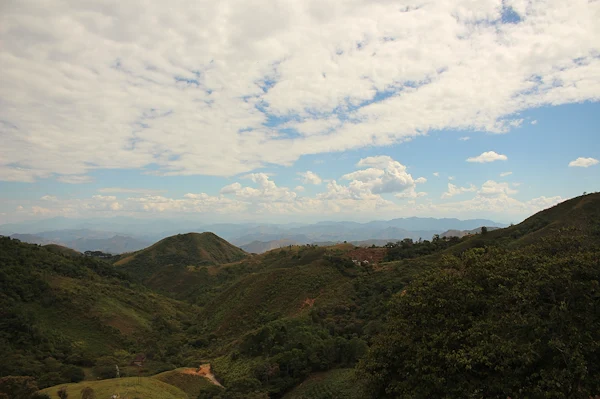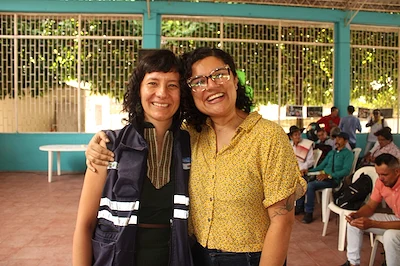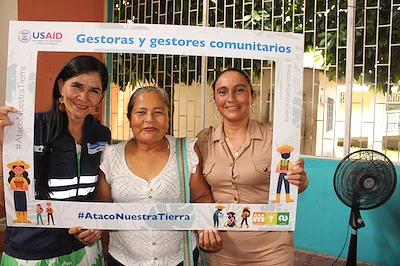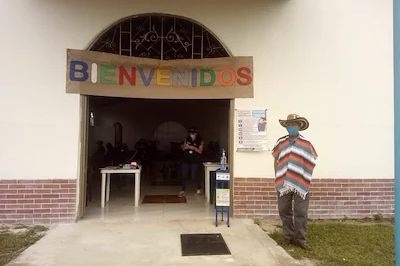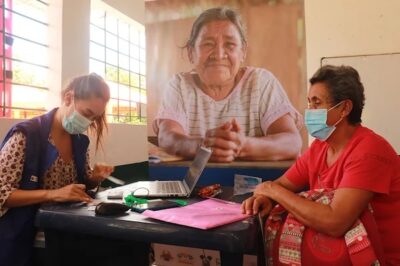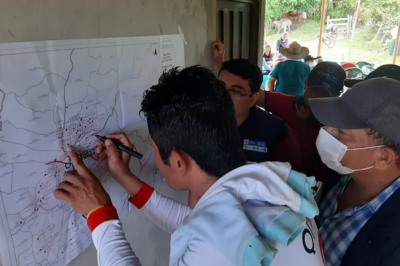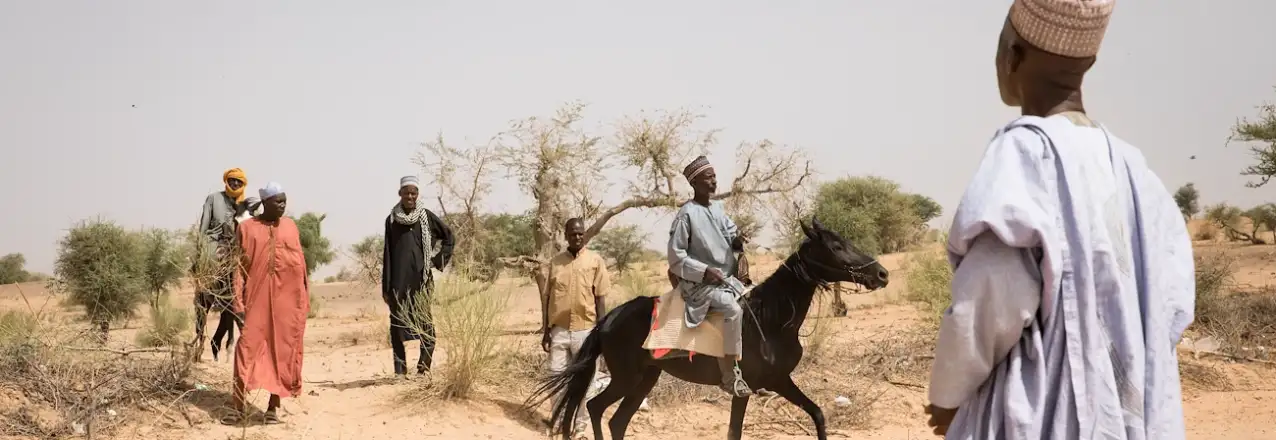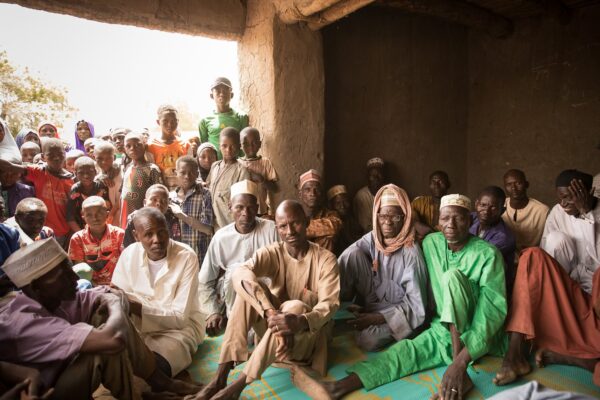USAID is helping farming families title their land and access licit economic opportunities in exchange for eradicating their coca crops.
When Víctor Ruíz heard that a massive land formalization initiative was coming to Cáceres, his municipality in Antioquia, he never imagined the impact it would have on his community. Throughout his life, Ruíz has grown coca, the main ingredient in cocaine. His family farm extends over 79 hectares, and they usually reserve three hectares for these illegal, yet lucrative crops.
But now Víctor, president of the Los Lloros community action board, will no longer grow coca. When he has his registered land title, he understands there is a range of opportunities that could benefit his family, his community, and his region.
“The most important thing for landowners is to have our land titled,” says Ruíz. “If we don’t have land titles, we can’t access state resources. We know that a plot of land that does not have its documents up to date is not going to obtain benefits.”


A Disconnected Past
The lack of a legal connection to their property facilitates the decision to plant illicit crops, says Ruíz. When combined with the municipality’s history of violence and the lack of goods and services provided by the state, informal land markets aggravate the economic situation of thousands of farmers who feel there are no viable options to access competitive markets and improve their lives. As a result, growing coca plants is less a crime and more a sensible choice for survival. It’s a vicious circle in which the two elements of an absent government and illicit trade have inexorably led to a worsening of the security situation.
Currently in Cáceres, there are more than 600 families involved in growing illicit crops on more than 1,400 hectares, according to a study derived from the latest aerial photographs taken for updating the rural cadaster and titling properties. The current levels show that the number of hectares planted with illicit crops grew by 16 percent during the pandemic years 2020-2022, according to figures from the United Nations-funded Integrated Illicit Crop Monitoring System (SIMCI).
The formalization initiative, known as the Rural Property and Land Administration Plan (POSPR by its Spanish acronym), compiles parcel information, land use data, and strives to resolve land conflicts among neighbors. This makes it possible to update the rural cadaster, deliver property titles to landowners, and support a functioning land market, all of which contribute to the 2016 Peace Accords.
“It is no secret to anyone that, nationwide, not just here in Bajo Cauca, there is a lot of illicit cultivation,” says Ruíz. “If that plot or farm has these crops, it is logical that they will not be legalized until they are eradicated.”

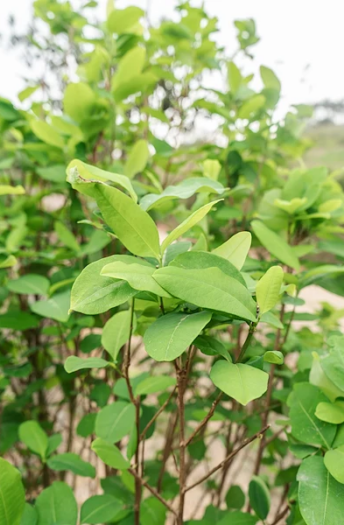
For Colombia’s National Land Agency, the Cáceres parcel sweep has made it clear just how difficult it is for some communities to go from one village to the next. Parcel sweep operators visited every parcel in the municipality, exposing the needs of locals to access legal markets with their products.
Cáceres, Center of Transformation
The Government of Colombia has selected Cáceres as the first municipality to implement the 3T Strategy, which seeks the voluntary substitution of illicit crops in exchange for the formalization of property. The three T’s stand for Titling, Transition and Transformation, and the strategy is novel because it leverages USAID’s ongoing support for land tenure programming in partnership with the Ministry of Justice and the United Nations Office on Drugs and Crime (UNODC) for compliance.
In addition to the titling of rural property, the 3T Strategy includes a plan to support food security for rural families, investments in small infrastructure projects, and funds to plan and improve agricultural projects in key value chains like cocoa, honey and dairy.
Like the family of Víctor Ruíz, more than 450 households in rural villages in Cáceres could potentially opt for land titling and support from the government over growing illicit crops. So far, over 100 families have confirmed their participation in the 3T Strategy.
“The massive property sweep is transforming lives and territory,” says Ruíz.Once the 3T Strategy has been tested in Cáceres, the government aims to replicate it in four municipalities which, together with Cáceres, concentrate 13 percent of Colombia’s coca, according to SIMCI: Puerto Rico (Meta), Santander de Quilichao (Cauca), Sardinata (Norte de Santander) and Tumaco (Nariño).
The 3T Strategy’s innovative feature is the combination of property titling, state interventions, and support from development aid with a previously invisible ingredient: the decision-making power of the communities who choose a culture of formal land ownership and responsible economic development in their villages over the short-term benefits of illicit crops.

Reaching communities with these services depends on the leadership of people like Víctor Ruíz. As president of the community action board, Ruíz was involved in the parcel sweep as a community manager. His role is to motivate local residents to voluntarily eradicate coca crops. His participation is fundamental to making them see why obtaining a registered land title is what they have dreamed of for years.
The land titling component of the 3T Strategy has already begun delivering land titles to rural families in Cáceres and will continue throughout 2023.
Like Víctor, there are 20 social leaders who worked in the massive property sweep as community managers in Cáceres. Edid Medina is a community manager and president of the community action board in the village of Vijagual. She also encourages her community to voluntarily eradicate coca and plant other crops such as cassava and corn on their land. For her, having a title deed to her land represents hope and is the document that supports her when she needs to acquire a loan or apply for a subsidy to improve her home.
“After uprooting the coca, what we have is a grass pasture. Right now, we are planting corn, rice and cassava. I have the hope that you can go to any bank, anywhere, and with a land title, you don’t come empty-handed, you come with hope,” she says.

A Voluntary Choice
In 2023, following the finalization of the land sweep and the validation of over 11,500 parcels, the National Land Agency began holding public hearings, which is a final step before land titles are emitted. In the first public hearing, where more than 150 people attended, and17 families that grow illicit crops signed agreements for voluntary eradication.



In Cáceres, POSPR implementation identified 1,263 parcels covering 58,600 hectares that are subject to agrarian reform processes, and 1,024 applications for access to land by landless families.



